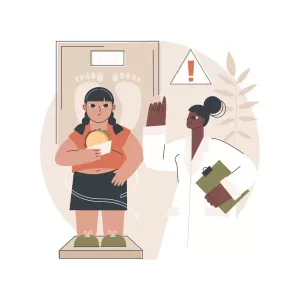

Our Review Process
Our articles undergo extensive medical review by board-certified practitioners to confirm that all factual inferences with respect to medical conditions, symptoms, treatments, and protocols are legitimate, canonical, and adhere to current guidelines and the latest discoveries. Read more.
Our Editorial Team
Shifa Fatima, MSc.
Author
Dr. Apoorva T, MHM.
MEDICAL ADVISOR
How Food And Blood Sugar Levels Related to Each-other
Blood sugar is the amount of sugar that exists in your blood. This sugar comes from each and every food you eat. Blood sugar is the main energy source for your body. The disease you get from having high blood sugar levels is diabetes.
Blood sugar level can also be called 'Glycaemia', which measures the concentration of sugar levels in the blood. These sugar levels can also be measured in the bodies of animals. In general, 4 grams of sugar or glucose in 70 kg of human blood. The normal range of Blood Sugar Levels should be less than 140 mg/ dL. A blood sugar of more than 200 mg/ dL states that the person has diabetes, and a Blood Sugar Level between 140 mg/ dL and 199 mg/ dL indicates that the person has early stages of diabetes, which is 'Prediabetes'. Know about peanut for diabetes.
A Blood Sugar Level Table is given below for better understanding. Also know about peanut for diabetes.
Table of Contents
How Your Eating Habits Affect Your Blood Sugar Level?
The main nutrient that makes a difference and changes your blood sugar are carbohydrates. When you digest carbohydrates, the digestive system turns some of those carbohydrates into sugars, which then enters the blood. When blood sugar increases, your pancreas starts to produce insulin so that the cell can absorb the sugar. By this process, the blood sugar level decreases, resulting in diabetes. A person should eat a meal that contains moderate amounts of carbohydrates. Proteins blunt the absorption of carbs, so that the sugars from the food can be stabilised. Fibres also help slow down the effects of carbs on the sugar level. Also know more about diabetes diet chart.
The Relationship Between Blood Sugar Level and GI
The glycemic index determines which foods can affect your blood sugar levels with a particular potential that contains carbohydrates. Foods with a high Glycemic index value will increase your blood sugar levels faster than those with a lower value of the glycemic index. Food with a high glycemic index means carbohydrates will be absorbed in the blood very quickly.
Factors that affect the glycemic index:
- Physical entrapment of food (food's ability to be absorbed by the body)
- Fibre's viscosity (thickness of liquid)
- Content of sugar
- Content of proteins and sugars
- Content of acids
- Processing of the food
- Rate of cooking .
Also know about sugar diet chart.
How to Control Blood Sugar Levels
There are many effective ways to how to reduce blood sugar level . Some of them are given below:
- Regular exercise - Insulin sensitivity can be increased with regular exercise, which will help you maintain the right weight.
- Managing the intake of carbs - Most of the impacts on your sugar levels are made by carbohydrates. You should plan your meal properly, with low or medium levels of carbs.
- Fibre intake - Blood sugar can be effectively improved by having soluble fibres in your diet. They help reduce sugar level and slow down the absorption of carbs into the bloodstream.
- Stay hydrated - Drinking water can help you remove excess sugars in your kidneys through urine. It lowers the level of sugar in your body and keeps you hydrated.
- Stress levels - Blood sugar level rises because of high stress. Hormones like glucagon and cortisol are released during stress. Yoga and meditation can help you lower your stress and sugar levels.
- Healthy food - A person should often eat food that can immediately regulate and lower their blood sugar level. Seafood, broccoli, pumpkin, okra, kimchi, sauerkraut, flax seeds, beans, berries, avocados, oats, citrus fruits, yoghurt, etc., are all good options.
Also know about pre diabetes levels.
1. Choose Your Food Carefully
A person should have healthy food with a lower glycemic index value so that blood sugar levels can stay normal. You should plan your diet according to the glycemic index because they help you lose weight and maintain sugar levels.
Here are some foods to eat when you have high blood sugar to lower/control your blood sugar levels -
- Green vegetables (51)
- oatmeal (54)
- peanuts (14)
- peas (39)
- carrots (16)
- kidney beans (24)
- hummus (12-18)
- skim milk (32-37)
- fruits (25-39)
Also read about list of fruits for diabetics to eat.
2. Exercise
Exercise can help you stay healthy by increasing your metabolism and maintaining proper weight. It can also help reduce stress and boost your mind. The best exercises to help you regulate your blood sugar levels are listed below:
- Brisk walking in an open area or garden.
- Weight lifting
- Meditation and yoga
- Cycling and running
- Dancing and swimming
- Walking
Also read about sugar free, no added sugar, and unsweetened

Bottomline
High and low Blood Sugar Levels can cause many diseases, including diabetes. You should have a proper diet with low carbs and choose foods with a low glycemic index to control your sugar level. Exercise and meditate to have a healthy body and peaceful mind. Eat a low carb diet a day and keep low/ high sugar levels away!
Also know about diabetes yoga
FAQs
1. What food lowers blood sugar levels immediately?
Foods like nuts or nut butter, beans and lentils, pumpkin or pumpkin seeds, broccoli, and broccoli sprouts will help immediately lower your blood sugar level.
2. How long before what you eat affects your blood sugar level?
Blood sugar starts to rise immediately after you have your meal. After about two hours, the sugar level becomes normal to the level before the meal as insulin starts acting just after a person eats his food.
References
- https://www.healthline.com/health/and0after0effect0eating0blood0sugar#carbohydrates
Disclaimer
This website's content is provided only for educational reasons and is not meant to be a replacement for professional medical advice. Due to individual differences, the reader should contact their physician to decide whether the material is applicable to their case.








